Nothing is simpler than greatness; indeed, to be simple is to be great.
Ralph Waldo Emerson
Hello all! As promised, I’m back today with the third installment of my business review series to give you an update after passing the 1,000 subscriber mark. If you’re new since the last edition, this is where I give my imaginary investors (aka you) an update on the business (aka this newsletter). If you want to read the previous summaries, they’re linked at the bottom of the post.
Today we’ll talk through:
Closing the gap to 1,000 (the story and the data)
Product (my newsletter formats)
Marketing (brand and social)
What’s next
Let’s get to it!
Closing the gap to 1,000
The story
I signed up for Substack in July 2021. I had the idea that I wanted to write publicly but I got analysis paralysis and blocked myself. I signed up and then promptly took no action for 6 months. Great work, Pat 🥲.
Then in January 2022, I got myself to start writing. I posted my first 5 articles on my personal website and shared them with a handful of friends and coworkers. In retrospect, I wish I had sent these on Substack, but the most important thing was that I broke the seal. I started. I did a 6 week trial run, writing short pieces and using stock imagery from Unsplash as my cover photos. A solid, basic start.
Following that first run, I fell off the wagon for the next two months. Then in May, I convinced myself to send my first newsletter. I sent the piece “The Design Execution Gap” to 5 people on May 13. After starting on Substack my motivation grew substantially. No matter how small the numbers, I could see some progress with each post. I could see how many people were reading and how many new folks were joining. It gave me the fuel I needed to keep moving: a reason to sit my butt in the chair and put words on the page each day.
I plugged along in June and July trying to establish some cadence with my work, then got serious in August. I introduced Design Gratitude as a second format to complement my standard blog style pieces and aimed to publish two articles per week. I also committed to upping my Twitter game, writing threads and sharing every day. I got lucky and struck oil with consecutive threads (one about presentations in Figma, the other about Figma keyboard shortcuts) which resulted in a big spike that set the course leading into the fall.
2 pieces per week proved to be too much to sustain at the time, so I shifted back to once per week for the rest of the year. I still work a full-time job as a principal designer at a startup, so I have to be careful to balance my energy and not burn myself out. Ultimately, the newsletter game is an endurance sport; what matters the most is that I produce consistently week over week for years. So anything I do must ultimately be sustainable for me as a one-man show.
Growth continued steadily over the course of the fall. I got a nice bump in November from getting my workspace featured on Workspaces.xyz which also increased the daily rate of new subscribers. Then in January, I committed to upping my output again and coincidentally the daily growth rate nearly doubled at the same time. It’s stayed strong since and continues to get stronger with each new post.
And that’s pretty much the story. Nothing crazy, just a lot of work week over week for months on end. From my first post on Substack, it took about 9 months and 1,000 hours of work to reach the 1,000 subscriber mark. Frankly, I don’t know if that’s good, bad or average. But considering I started from zero with no prior public presence, it feels good to me!
Thank you all for seeing value in my work and for joining in the fun. I’m happiest when I’m making things and you give me a reason to create every single day. For that I’m eternally grateful.
Now let’s see some numbers!
Timeline & Cadence
44 posts in 9 months
Slightly over 1 post per week on average. Currently doing 1.5 per week with the goal to eventually get to 2.
Month-over-month growth
Avg last 6 months: 23%
This seems like a pretty decent sample size now following August’s outlier but I’m still not sure how to benchmark against it going forward.
On one hand, growth seems strong which makes me worry it could go down. But on the other hand, the impact of network effect at larger scale makes me think it has potential to increase significantly.
Projections
The months here refer to months of publishing on Substack. The percentages refer to month-over-month growth and are projected out evenly across the time range.
Based on what I see from larger creators who are a year or two ahead of me, I want to believe that the high growth projection is possible (or even higher). But I’m cautious by nature, so I don’t want to commit emotionally to explosive growth that may not occur. 🤷♂️
The next big number I have my eye on is 10,000 subscribers and from the looks of it, I think I can say with some confidence that I’ll hit that mark before my two year publishing anniversary.
Growth slopes increasing
You can clearly track the quickening subscriber growth rates from when I started until today.
It’s not exactly a “doubling every X days” sort of scenario, but it’s also clearly improving more quickly as time goes by.
Post views vs open rate
The overall upward trend line for views is clear
My average open rate is steady, hovering a little over 50%
The open rate on editions of the Digest trend slightly higher, toward 55%
Post views vs. subscriptions driven
The average post generates only a couple of subscriptions whereas the hits drive the majority of new sign-ups.
My overall “hit-rate” is roughly 10/44 (23%), which I’m eyeballing by noticing the visual outliers above the trend line.
Despite the strong growth in the new year, I haven’t had a big hit for a while. This makes me think that my growth is sustainable and could go up if I get lucky with a hit or two.
Traffic – drivers of visits vs. subscriptions
Substack itself is the dominant referral source
Twitter makes an impact, though less so recently
HeyDesigner & UX Collective send consistent traffic, though UX Collective referrals appear to subscribe at over 2x the rate (could be misleading as some could be getting lost in the “direct” traffic source)
Google contributes despite me doing zero intentional SEO
Product
If I had to sum up my current strategy, it’s simple: be prolific.
The truth is that even after a year of writing I’m constantly experimenting, feeling it out and looking for signs that I might be stumbling upon something big. I’ve had plenty of success, but I still believe there’s a huge amount of untapped potential waiting for me to unlock it.
I currently write 3 different newsletter formats, each serving a unique purpose. I don’t know if this is a good or bad idea long-term, but I’m experimenting.
Design Practice
This is what I started with. A standard blog style article. Generally 1,000-1,500 words about a single topic. The main reason I write it is because it has high re-share value for other publications and thus has the highest upside for acquiring new readers.
Pros:
High re-share potential
High acquisition value
Solid engagement
Cons:
Takes more effort to write more words on a single topic
Can be hit or miss depending on the topic
Design Gratitude
My second series, which is a mix of a short blog style piece combined with a simple link digest. Generally 750-1,000 words. When I talk to people in person about Better by Design, this is often what they mention. It fits my mission to bring more positivity and approachability to the design discourse and just makes me happy 😄.
Pros:
The one that people mention when I talk to them in person
Fun and lightweight for me to do
Consistent engagement
Cons:
Low re-share potential
Low acquisition value
1% Better Digest
My most recent addition. A digest style piece that cuts across multiple topics. Generally 1,500-2,000 words. The main reason I write it is that I want to curate a high-value source of practical tools for people designing software products that I can eventually package into discrete knowledge products.
Pros:
Higher average engagement
Solid acquisition value
Helps me break up the work I want to do building a curriculum
Cons:
Takes more effort than I originally anticipated
Low re-share potential
Marketing
An interesting thing about creating a publication like this is that it simultaneously acts as my main product and my marketing. That said, I’m currently focusing on three marketing-specific areas.
Brand
I started the year by purchasing the domain www.betterbydesign.cc. itspatmorgan.substack.com was fine, but from a brand perspective it felt worth it to get a real domain.
Otherwise, I’m thinking a lot about how I refine my message to describe what I do, what I focus on, and who I write for. I feel like I have plenty to offer to professional designers, but I’m not that interested in being an “industry newsletter” nor am I interested in being a full-time “Figma guy”. I’m more interested in two things:
Helping designers go outside their comfort zone to discover more fulfilling work
Helping entrepreneurs better express their ideas by using design
It’s a work-in-progress, but that’s where my head’s at right now.
Twitter
The long and short of growing subscriber count is that you have to increase the top of the customer acquisition funnel. Despite my ambivalence about Twitter, it’s still the most effective outlet I’ve found for promoting my work in this capacity.
I’m experimenting a lot there at the moment. I figured out a system for scheduling my tweets weekly which helps to make the process more manageable and I’ve shifted my posts more toward the fun, conversational end of the spectrum rather than what I had been doing which was more informational.
Ultimately, my goal is to get people to express what they like about designs (positivity) and to surface tensions I see in an approachable format (aka memes). Then sprinkle in a bit of educational content here and there as previews of what you get from Better by Design.
Medium
I recently started sharing posts to the UX Collective on Medium after speaking with
. I’m sharing 1 post per week with them to bring my work to more people and so far the performance has been solid. The posts get good engagement and it’s been useful to get more people sharing on Twitter and Linkedin as small points of social proof.Only my blog style articles make sense to share via UX Collective, so it ends up being a nicely symbiotic relationship. A good jumping-off point for new folks who might also get some value from the work I do on Design Gratitude and the 1% Better Digest.
Toolkit
No toolkit changes since the last edition. I owe you all an article on how I manage my workflow with Notion, Obsidian and Figma, but since I’ve still been making a lot of changes it hasn’t made sense to share yet. Once it stabilizes, I’ll be sure to share.
What’s ahead?
Newsletter content
For the most part, I’m going to stay the course. I feel like what I’m doing is working. Even if nothing is causing explosive growth, I like the formats I’m creating and I can see them building up each week into a body of work that I can re-shape down the line into even more valuable resources. I do have one new idea I’m going to try out as an experiment next month that I think has solid potential (more detail below).
Monetization
In terms of monetization, I’m still focusing on free but Substack Pledges are now available if you’d like to go the extra mile and help me get over the hump! You’re getting roughly 20hrs of my time each week, which would be… not cheap… if you wanted to hire me as a contractor. 🙃 No pressure though! I appreciate your support no matter how you’re able to give it.
The main monetization models which seem reasonable to consider are basically:
1. Subscription
I charge a subscription via Substack and divide my content between free and paid tiers similar to how
or do it. Then I add a couple of extra options to the paid tier to sweeten the deal (access to tools I make, option to book a call with me, etc…)2. Sponsorship
I continue to make everything free but introduce sponsors. This would be closer to what Packy McCormick does with his Substack,
. While I’m fairly averse to advertising, I think I could do it without it feeling too forced. The benchmark for sponsorship would basically be: would I feel comfortable writing an edition of Design Gratitude about this company, product or service? I’d only accept sponsors for whom the answer to that question is a definite “yes”. Then, I’d use the newsletter as a jumping-off point to sell products that I craft.Other formats
Long-term, I’d love to also create audio and video content. The main reason I don’t do them now is strictly time constraints around balancing this work with my day job. So, I think I’ll only pursue these once I reach the point of working for myself full-time. In the near-term, I’ll look for opportunities to be a guest on other people’s shows, where I can get some exposure, but not have to manage production myself.
Experiments
Better by Redesigns
A new format in which I analyze a creator’s brand and product design, tease out areas where they could be improved, and then execute my suggestions. Will be a lot of work, but it’s interesting and useful for me and I think the output could be high impact. First attempt coming next month.
Social media
My nemesis. I’m always looking for better and easier ways to repackage content I’ve created for the newsletter to drive discovery.
Meeting the community
I’m considering adding open slots to my calendar every month to make time to meet some of you. These would just be a “coffee chat” style thing. Would you be interested? If so, ‘like’ this post and/or leave a comment. If there’s enough interest, I’ll figure it out!
If you got a little value from this post, consider subscribing, sharing, or following me on Twitter. If you got a lot of value, consider using Substack’s pledge feature to support my work with a paid subscription in the future. Either way, I appreciate you!





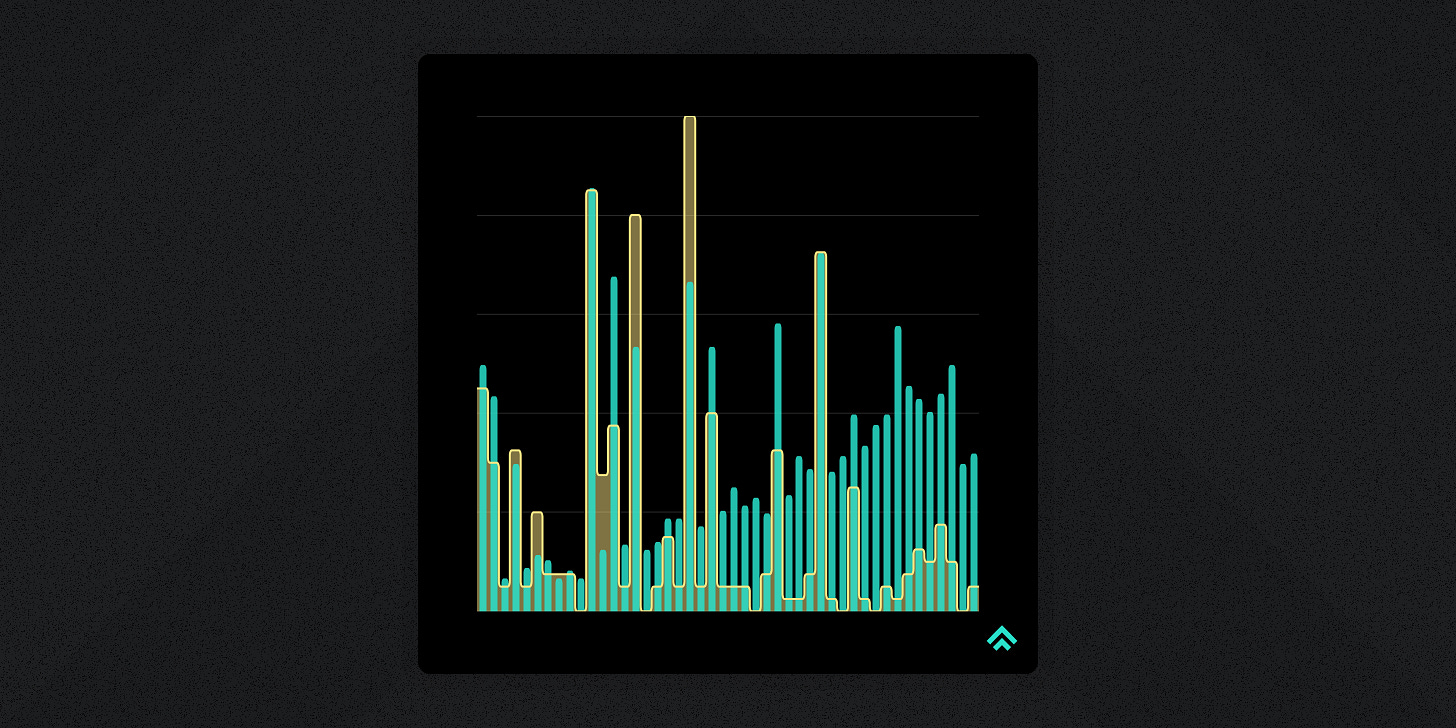

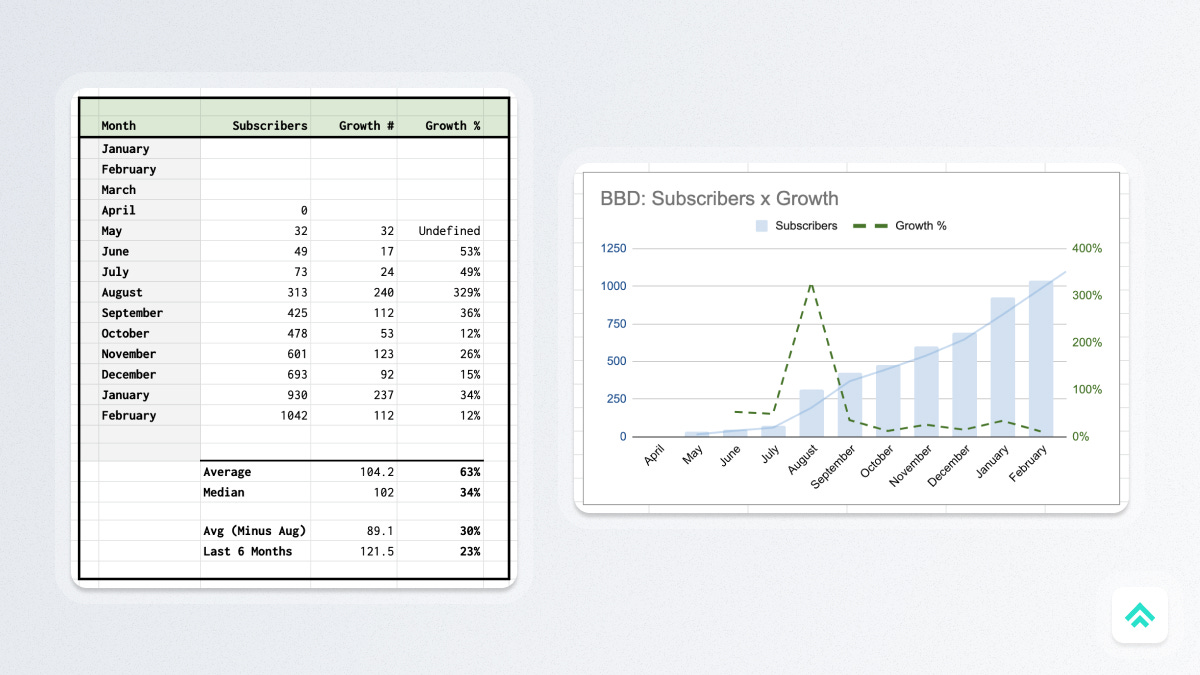
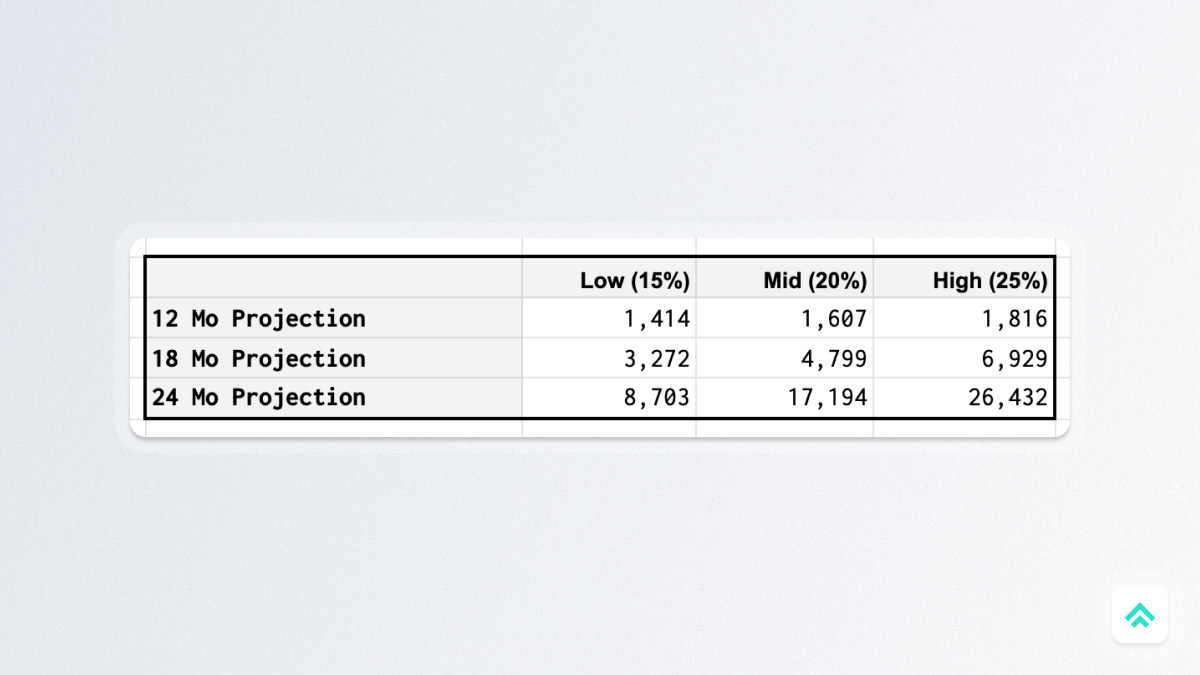
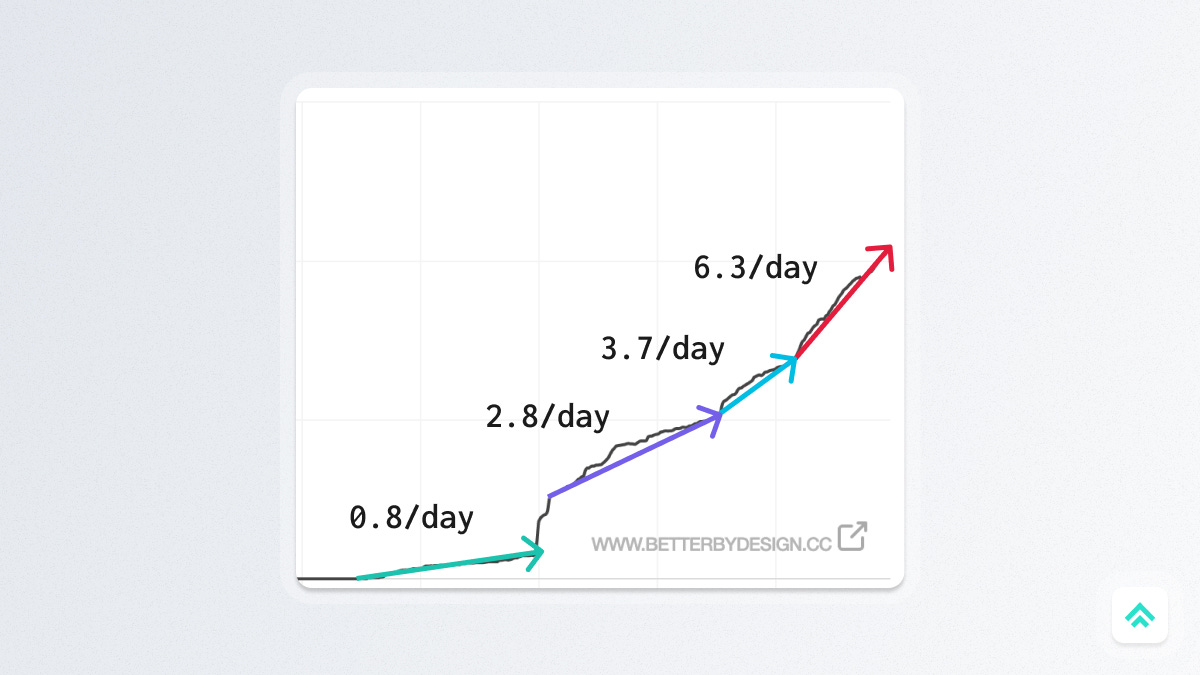
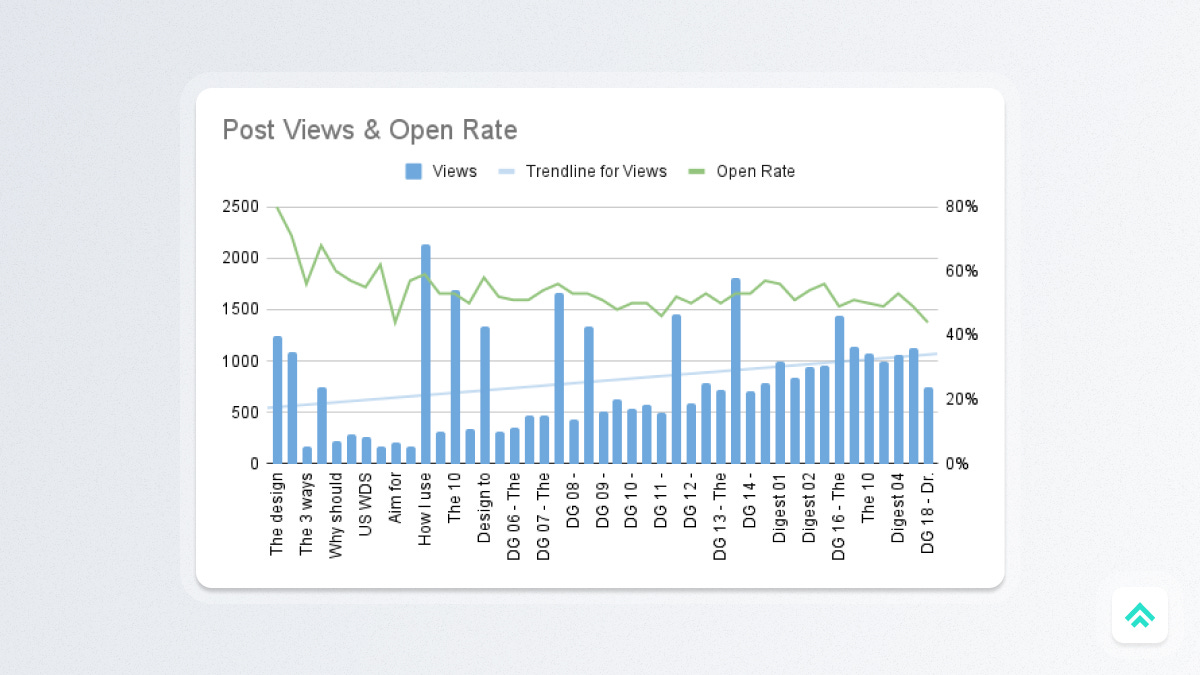
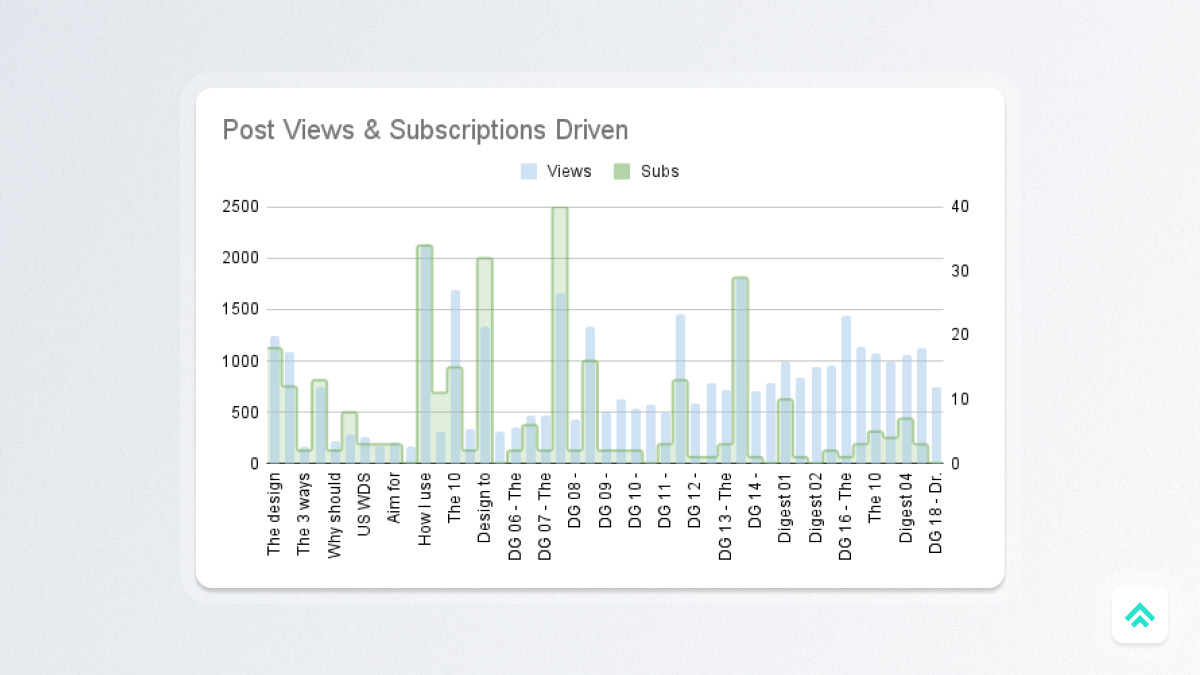


CONGRATS ON THE MILESTONE! Well deserved and I’m happy to witness the journey